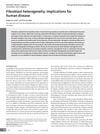Is There a Histone Code for Cellular Quiescence?
October 2021
in “
Frontiers in Cell and Developmental Biology
”
TLDR There might be a specific histone code for cellular quiescence, but more research is needed.
The document explored the concept of a histone code for cellular quiescence, focusing on how histone post-translational modifications (PTMs) might regulate gene expression and chromatin structure during quiescence. It discussed the roles of histone methylation and acetylation in modulating chromatin accessibility and transcriptional activity, with specific attention to marks like H3K4, H3K9, H3K27, H3K36, H3K79, and H4K20. The study highlighted the potential for these modifications to form a biological code that influences cellular processes such as DNA repair and state transmission. The review emphasized the need for further research to determine the existence of a consistent histone code for quiescence across species and tissues, suggesting that histone PTMs might convey information in a context-dependent manner.



